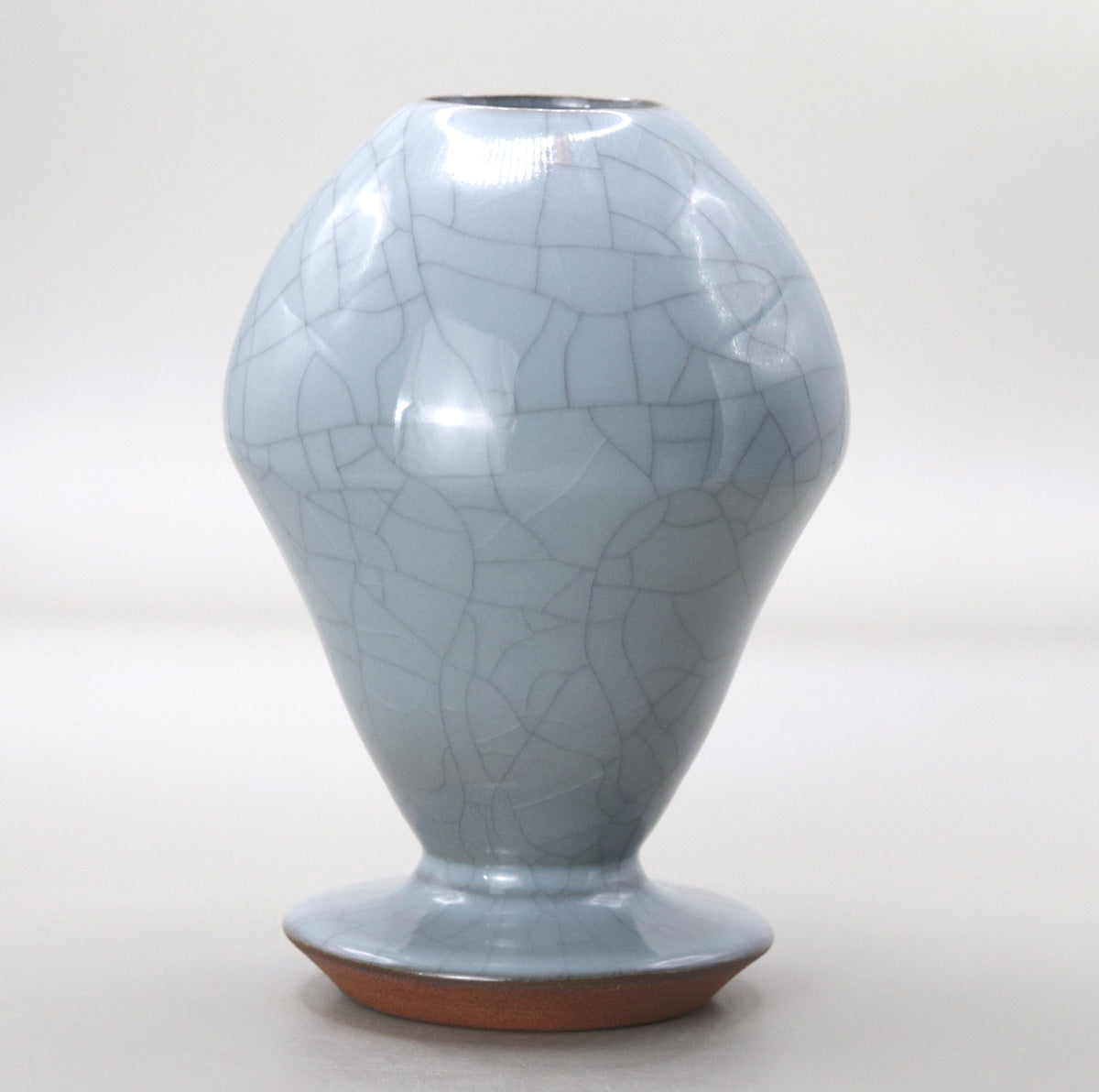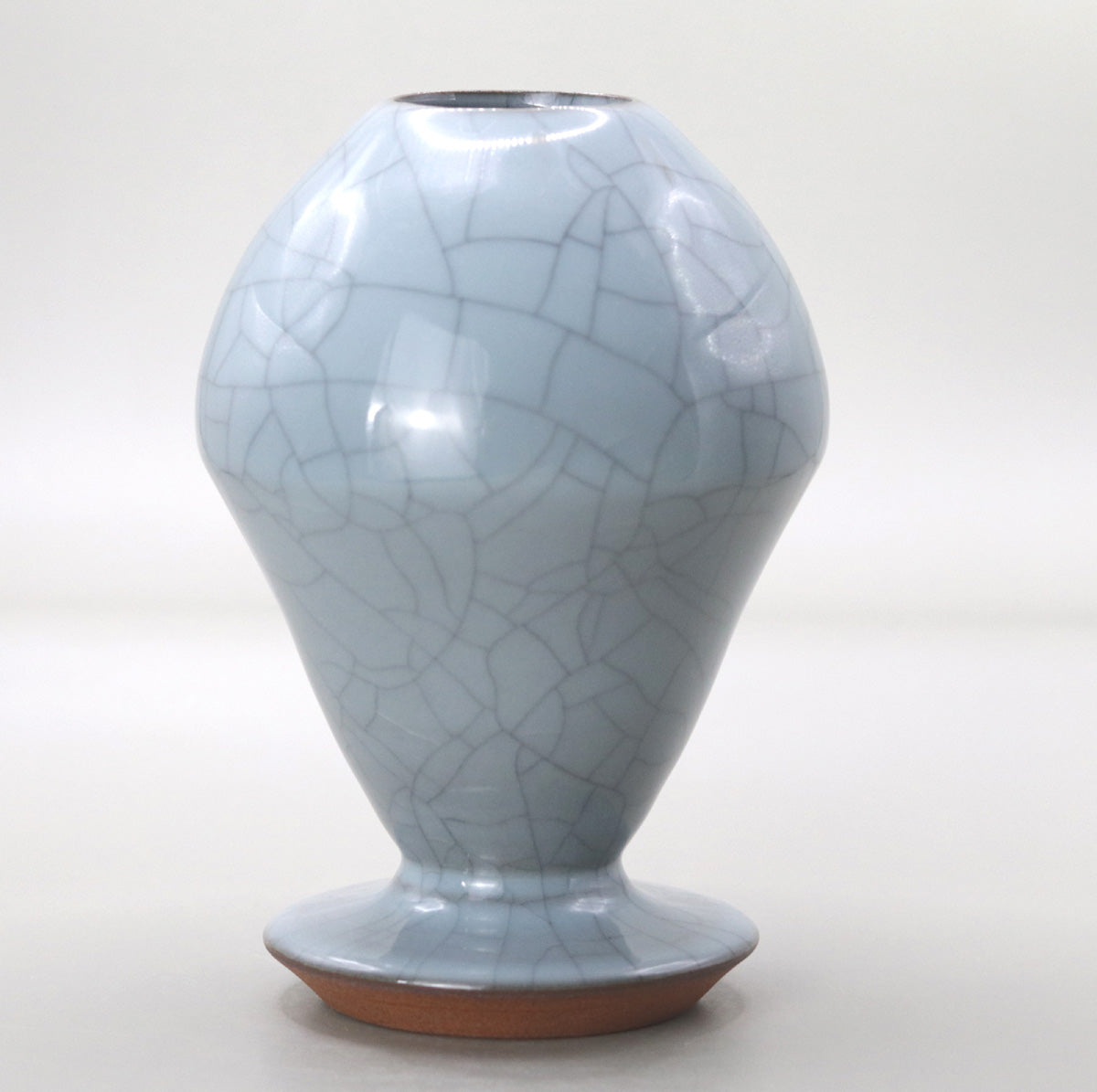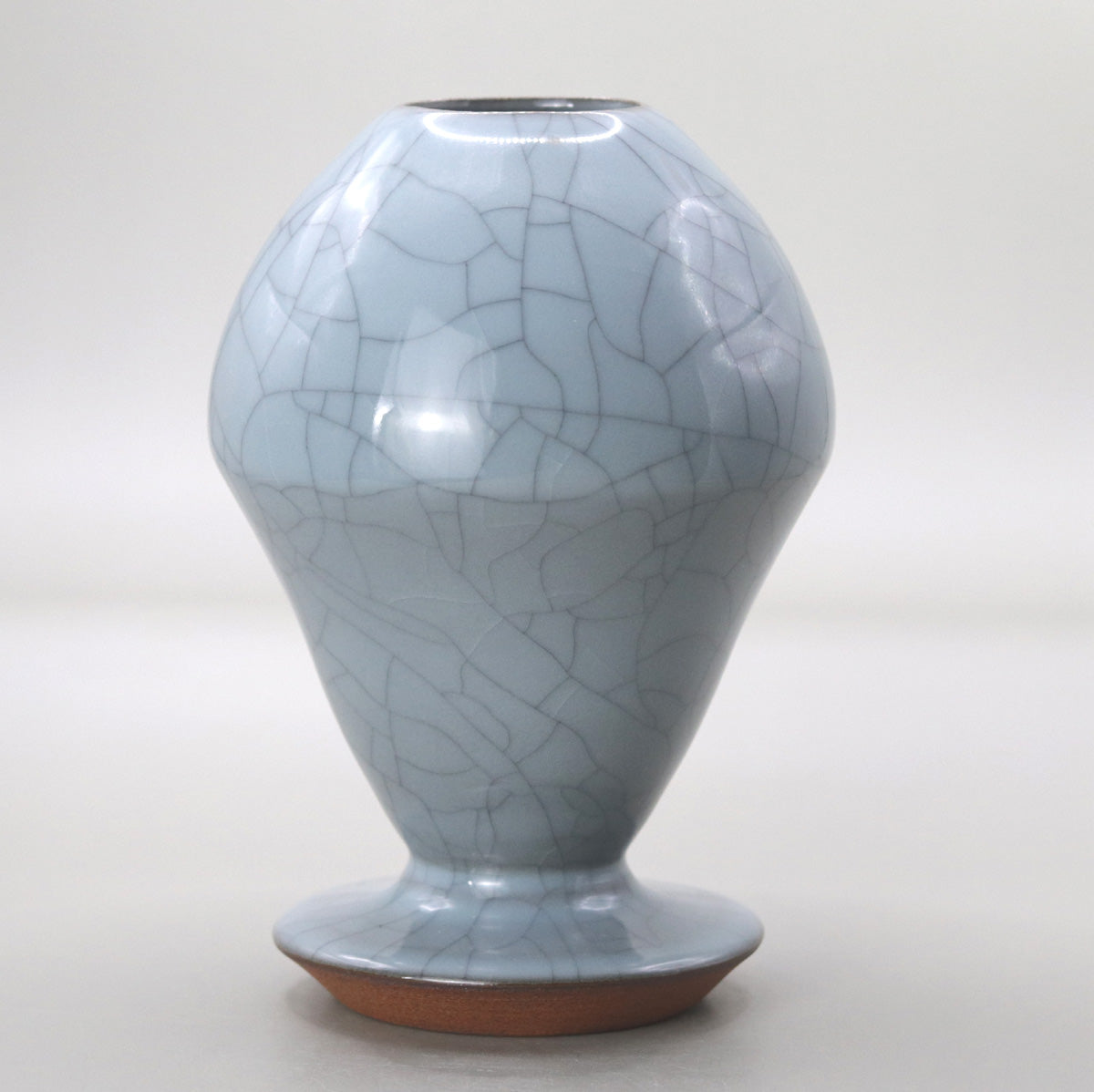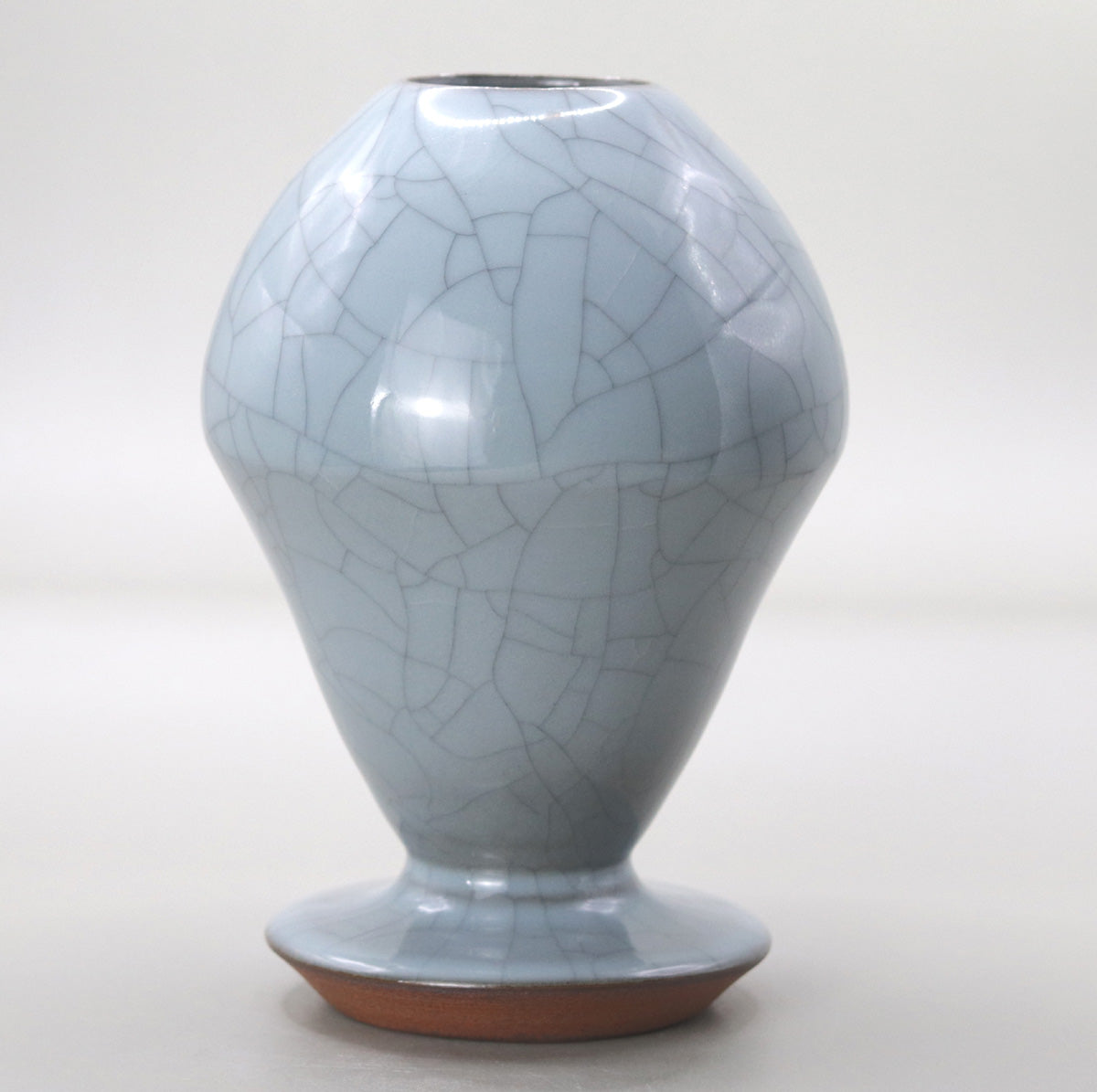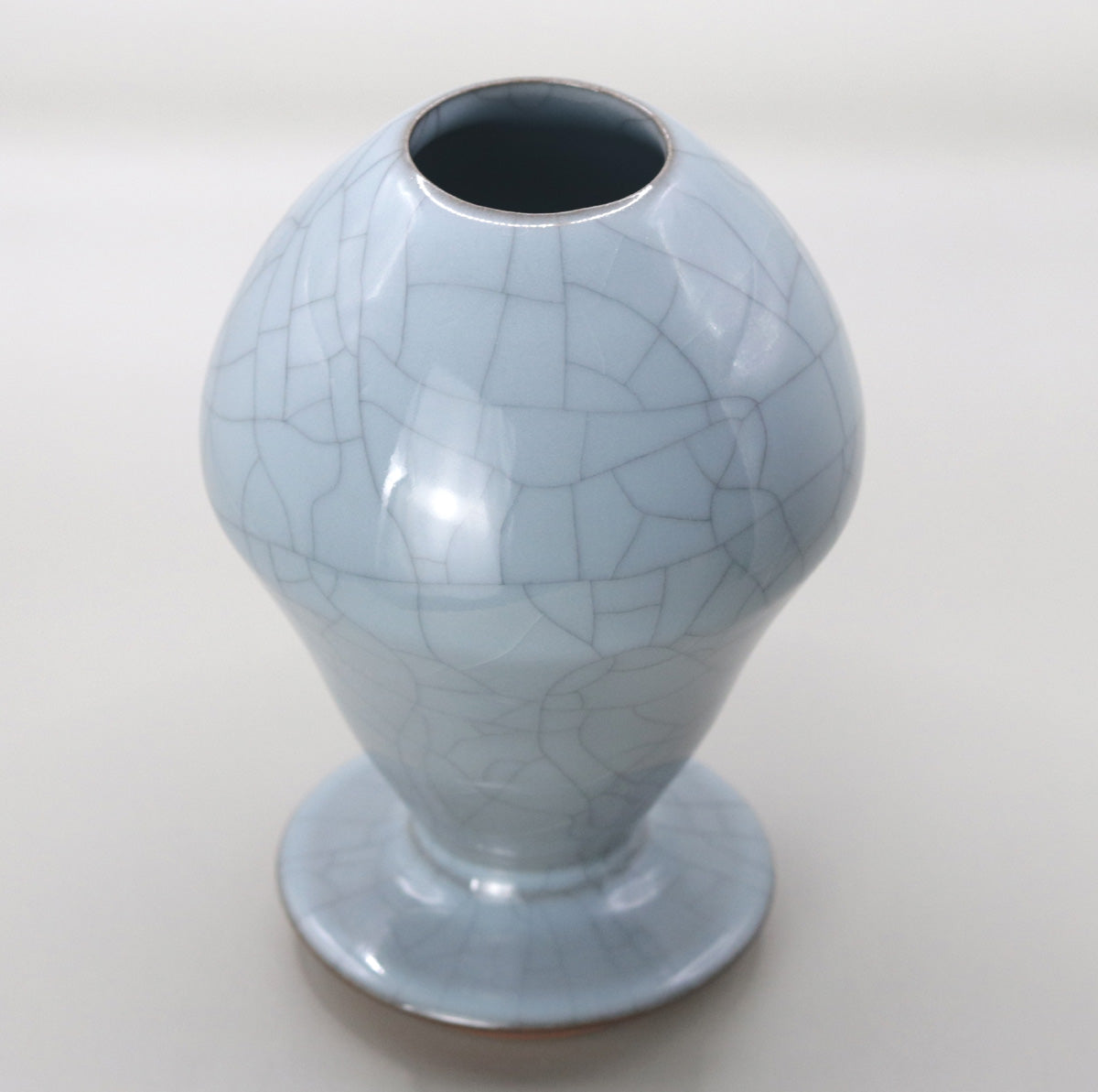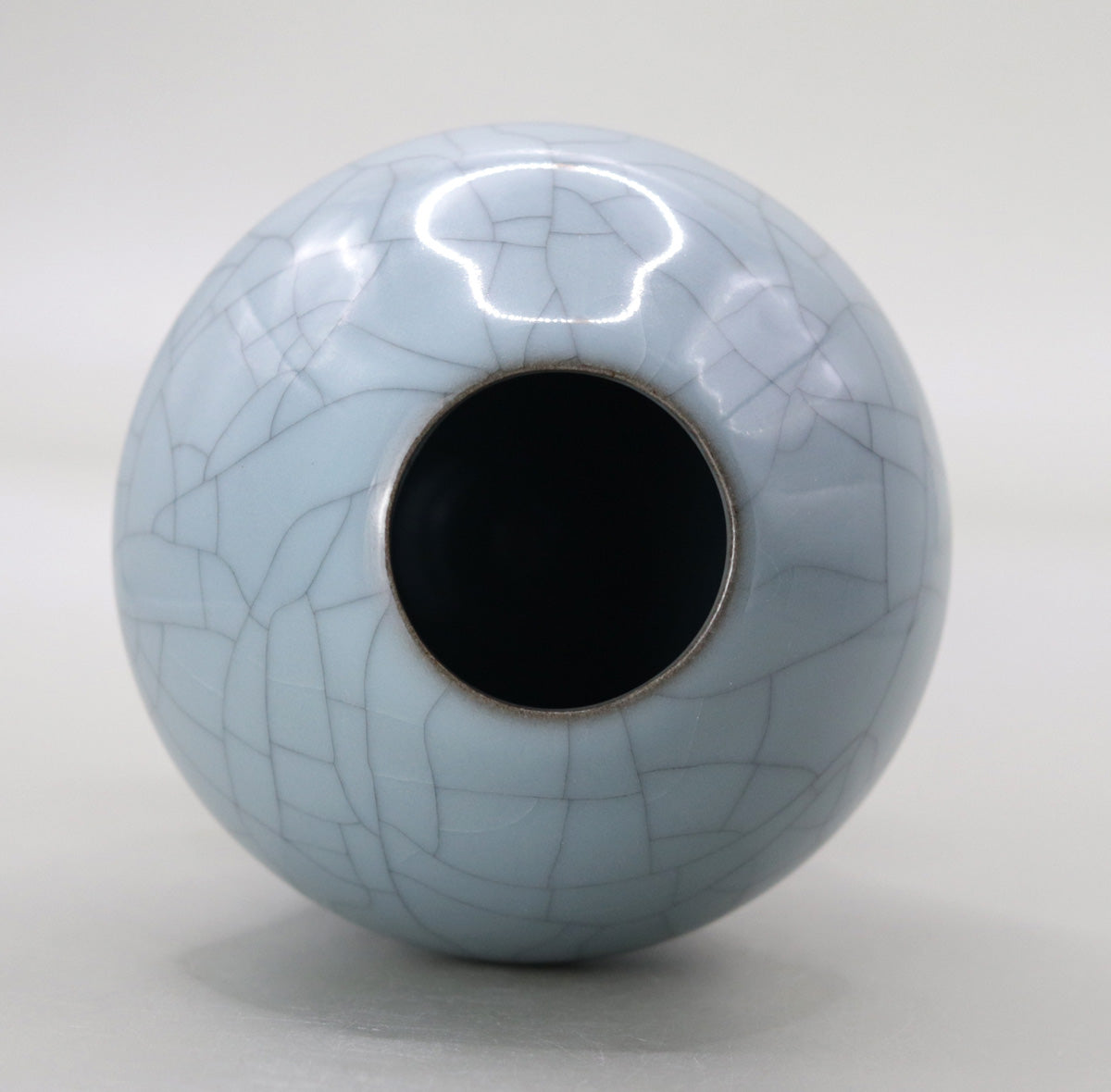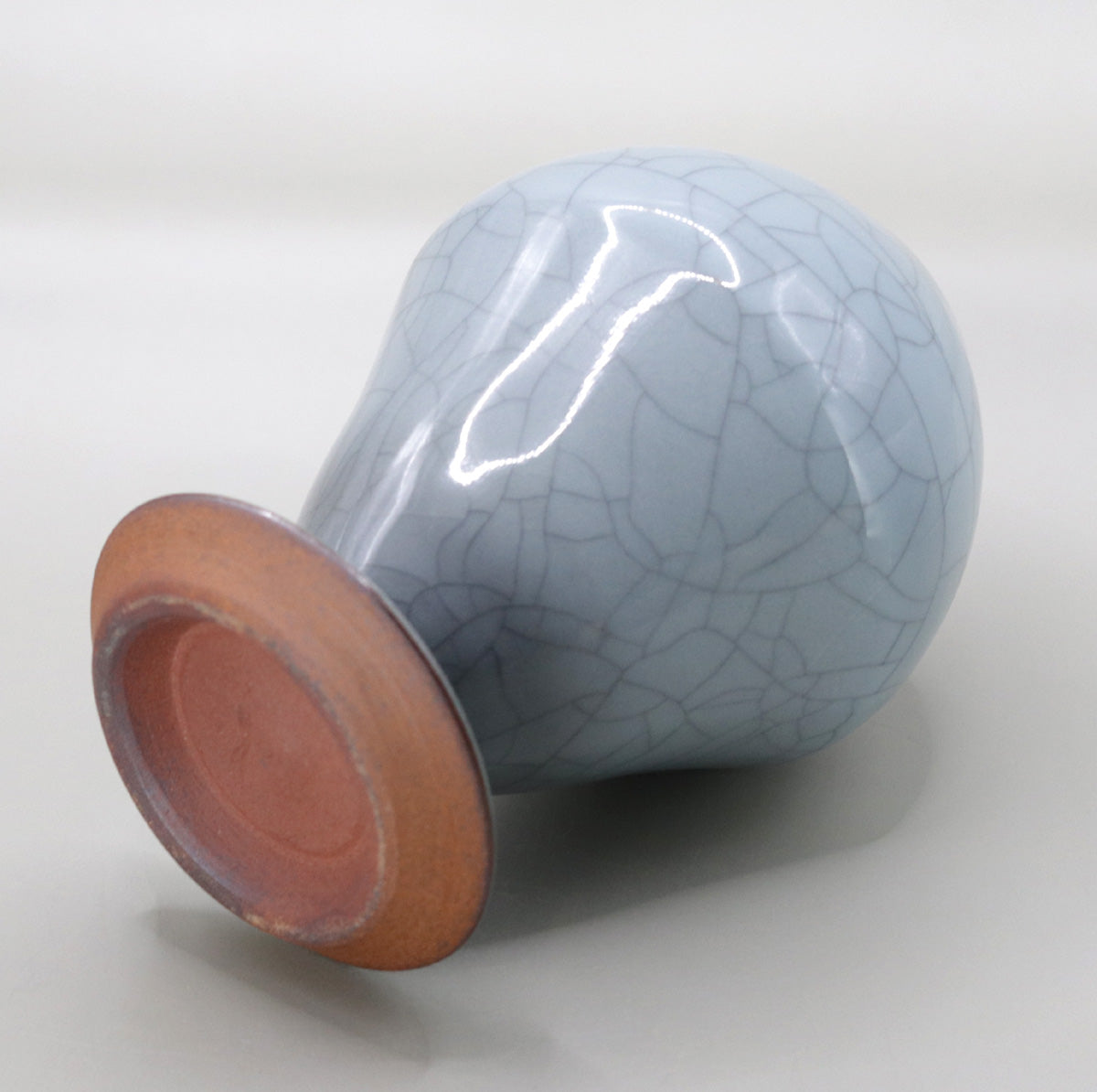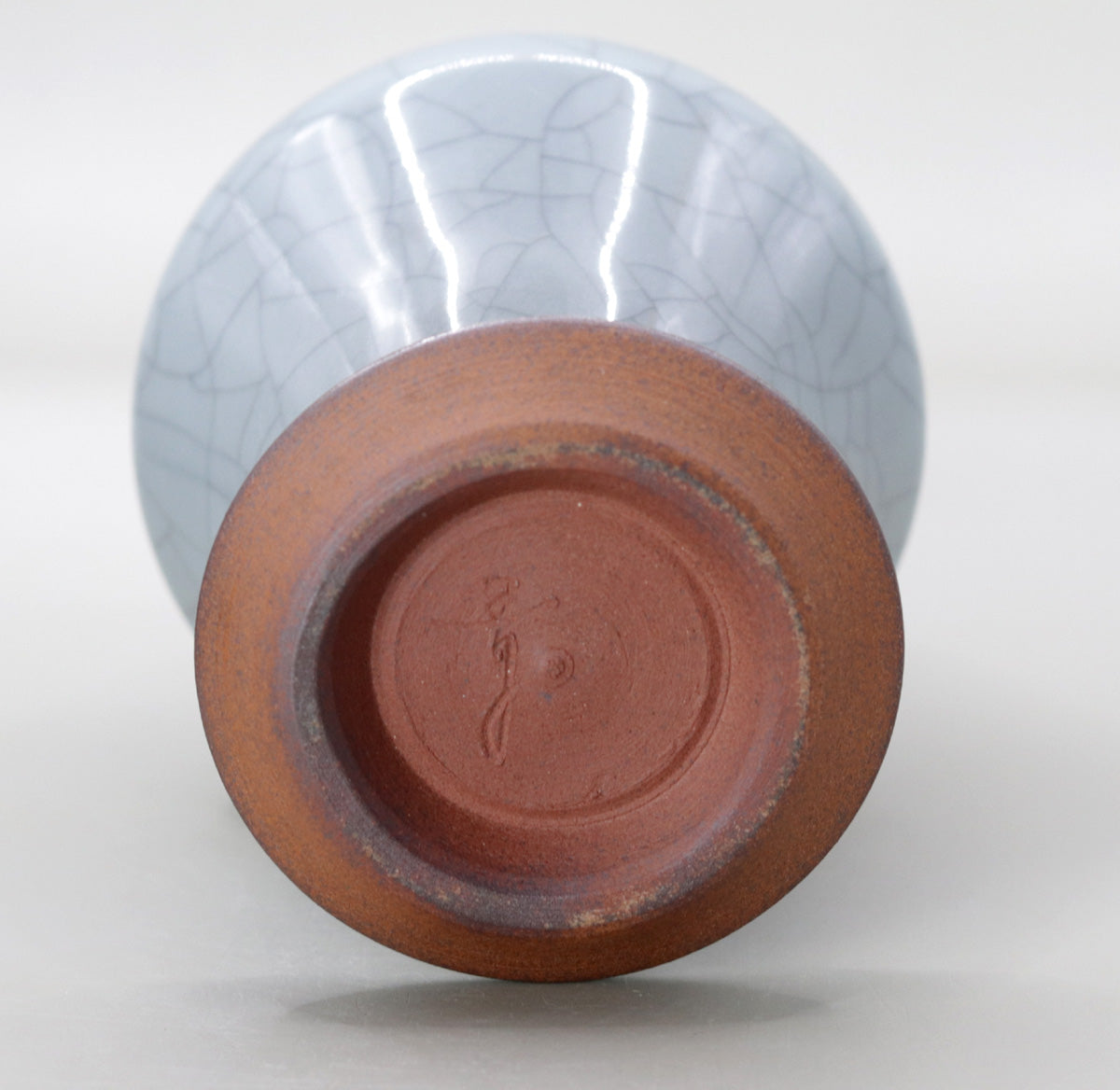Blue porcelain vase Masao Tagai
Blue porcelain vase Masao Tagai
Couldn't load pickup availability
Width: 12.5cm x 12.5cm Height: 16.3cm
Celadon flower vase by Masao Tagai
1. Overview of the work
This celadon vase has a strong presence, with large "mesh cracks" running leisurely across the pale, clear, sky-blue glaze. Its shape, which starts from a bulging body and then narrows to a disk-shaped base, is reminiscent of ancient Greek kylixes and eggplant-shaped vases from the Song Dynasty's Cizhou wares, while the wider base at the bottom gives it both stability and a modern lightness. The glaze reflects light like a mirror, with ink-dyed cracks intertwining like cobblestones, adding a sense of dynamism to the tranquil blue world.
2. Shape and design
| part | Shape characteristics | Aesthetic and practical effects |
|---|---|---|
| Mouth rim | A slightly inverted circular mouth. The silver-gray color of the iron is visible. | The flower fasteners work well, tightening up the pale blue. |
| shoulder area | The gently beveled edges resemble those of an octagon. | The surface that receives the light creates various shadows, highlighting the cracks. |
| Body | The bulging egg shape places the center of gravity at the top | It takes in the volume of the space and creates a dignified presence. |
| pedestal | The wide, disc-shaped base shows the base material | The structure is designed to be sturdy and not easily toppled, while also showcasing a traditional Japanese landscape. |
3. Glaze and Crazing
Color development : By adjusting the iron powder and performing a "reduction removal" process in which the iron is lightly oxidized after high-temperature reduction firing, a clear blue color without any reddish tinge is achieved.
Mesh Cracks : The difference in the expansion coefficient between the clay and glaze is set large, and wide cracks are generated by rapid cooling after firing. The line width is not too uniform, creating a movement with a random rhythm reminiscent of the cracks in natural stone.
Dyeing : After firing, brownish colored water is boiled and soaked into the ware, making the crazing stand out like ink painting. By adding floral water with use, the shadows of the lines deepen, and you can enjoy the beauty of aging.
Iron rim : The chipped glaze areas of the rim and base are thinly coated and the iron in the base is oxidized to produce a silver-grey to black iron color, which tightens the pale blue and is reminiscent of the iron rim and iron feet of classical official kilns.
4. Technical background
Masao Tagai, a full member of the Japan Crafts Association, excels in controlling thick celadon glazes and crazing. In this piece, a high content of feldspar and Gaia clay is used in the clay body , preventing the glaze from peeling while inducing large crazing. The glaze is designed to be highly viscous, creating a glassy layer that does not run off even when applied thickly. The atmosphere is switched to an oxidizing atmosphere at the end of the firing , making the glaze surface slightly opaque and adding depth. Through these three-stage control, he has achieved both the depth reminiscent of Song celadon and a modern mirror gloss.
5. Historical and cultural significance
The design of the vase, with its lower part set on a circular base, is reminiscent of the bases of bronze vessels such as "son" and "shaku," and has long been associated with ceremonial significance as a vessel that connects heaven and earth. The mysterious blue of the celadon from the Song Dynasty official kilns was praised by Zen monks as the "color of the sky" and "color of water," and is a symbol of wabi in the Japanese tea ceremony. This piece respects this tradition while incorporating a modern design for the base, elevating it to an appearance that will stand out not only in tea ceremonies but also in modern living rooms and gallery spaces.
6. Combination with flower materials
| season | Recommended flower materials | Points to consider |
|---|---|---|
| spring | Magnolia, Japanese yarrow | The large flower heads match the volume of the body, and the curves of the cracks and the branch lines intersect. |
| summer | Semi-summer, green bamboo | The cool blue glaze brings out the white of the undersides of the leaves and the green of the bamboo, emphasizing the feeling of enjoying the cool weather. |
| autumn | Lace lily, amagasaki | The straight flower stalk tightens the egg-shaped body, and the mesh penetrations and the lines of the flower stalk create a rhythm. |
| winter | Kantsubaki, Nanten | The red flowers and berries stand out against the pale blue, and the silver-gray iron rim accentuates the dignified atmosphere of the season. |
7. Points to note when viewing
Shadows of the mesh intrusion <br data-end="1751" data-start="1748">When light is shone at an angle, the lines reflect like flakes of mica, creating a floating sensation on the surface of the vessel.
Depth of Reflection <br data-end="1808" data-start="1805">The mirror-like glaze softly reflects the light from hanging scrolls and lanterns, and the vase itself blends into the space as a "mirror containing the scenery."
Contrast between the iron rim and the base material <br data-end="1880" data-start="1877">The black rim and base contrast with the pale blue, creating a scene where classicism and modernity intersect.
8. Conclusion
Masao Tagai's "Celadon Vase" is a masterpiece that embodies the harmony of "stillness and movement" and "classic and modernity" with its tranquil celadon glaze, bold mesh cracks, and stable circular base. Simply insert a single flower and your tokonoma will begin to breathe freshly, and the cracks will deepen with the seasons, transforming the vase into a "living celadon" that grows with the user. We hope you will use it for many years to come and carve your own story into it.
Share
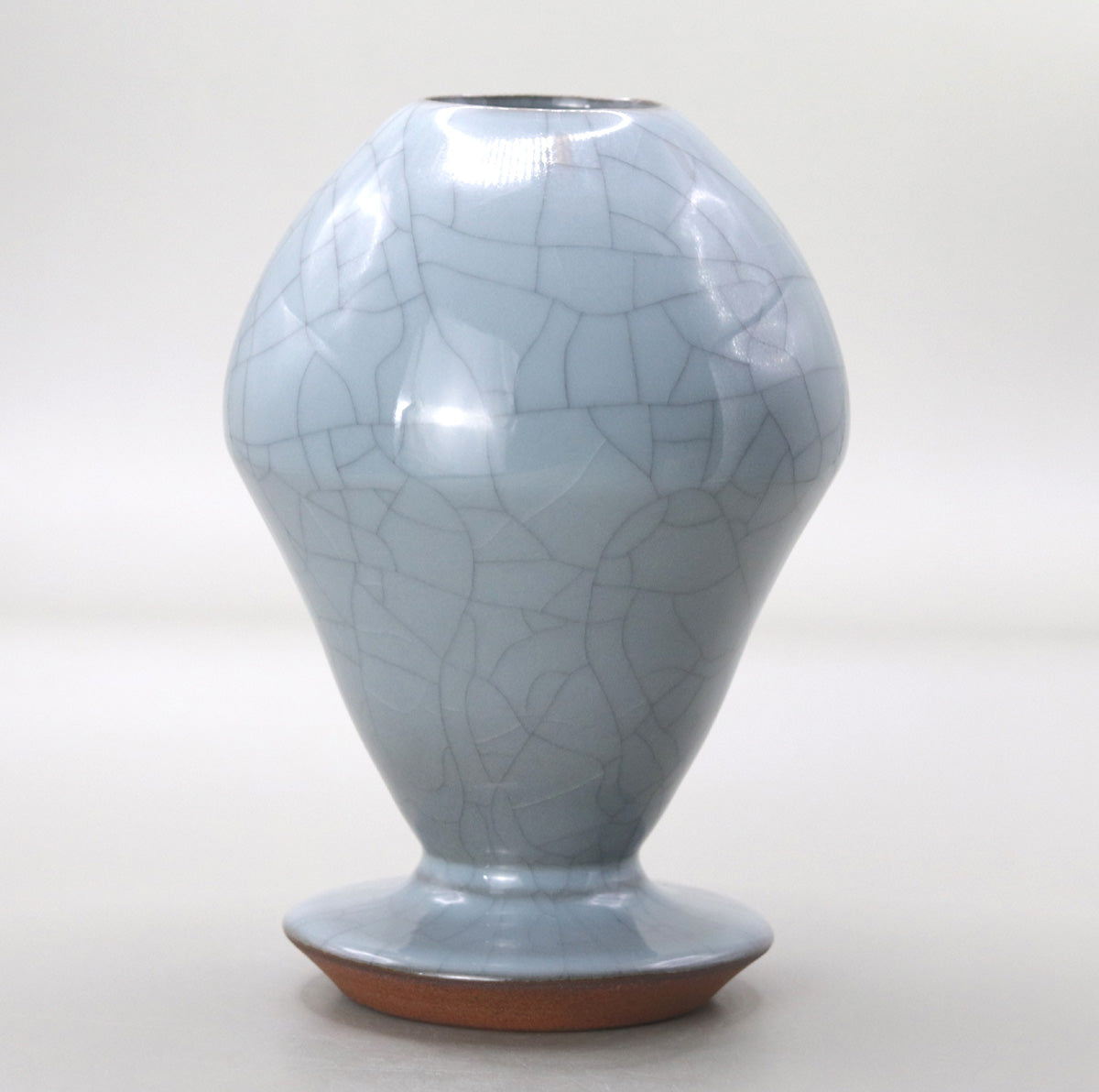
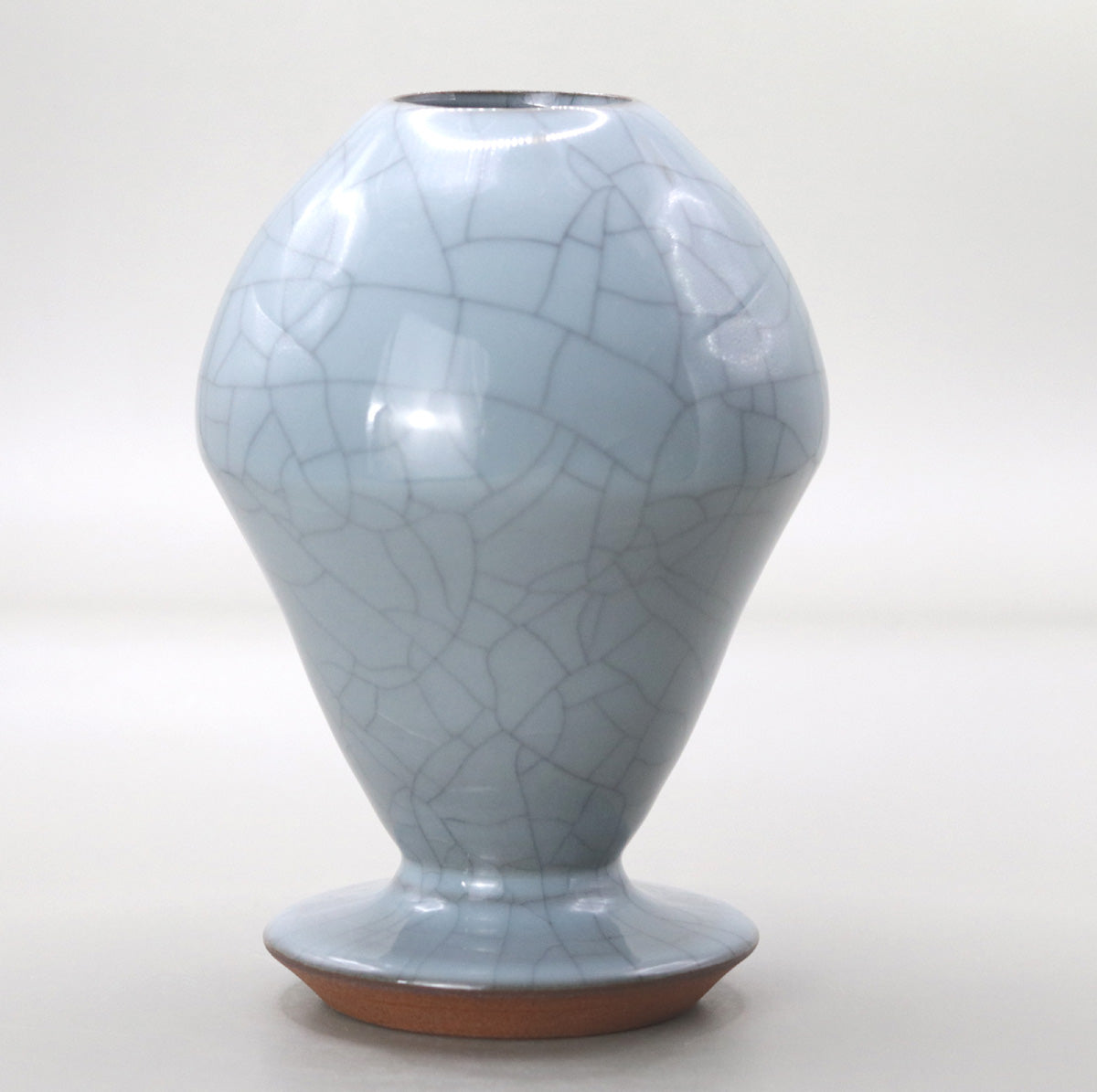
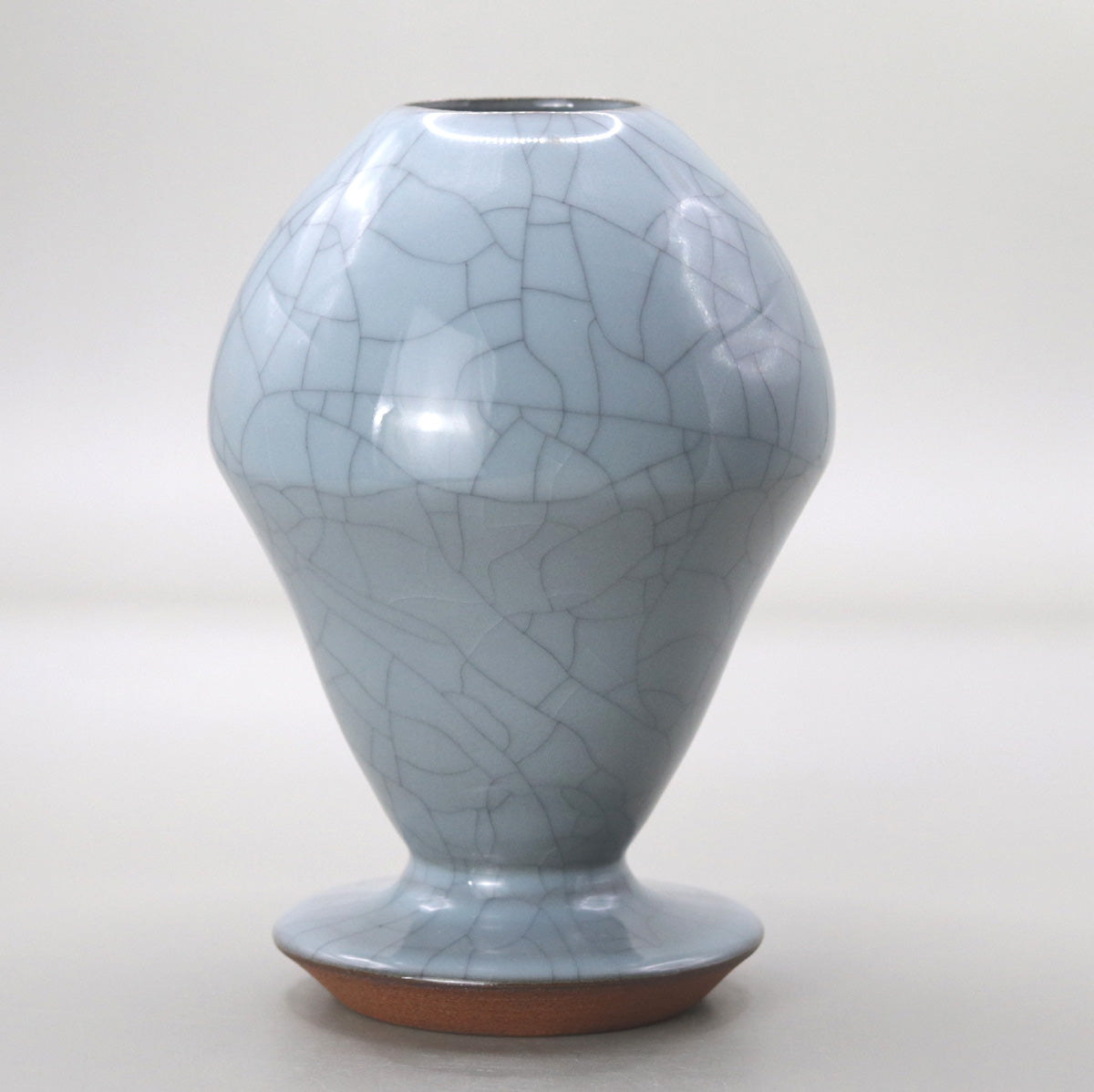
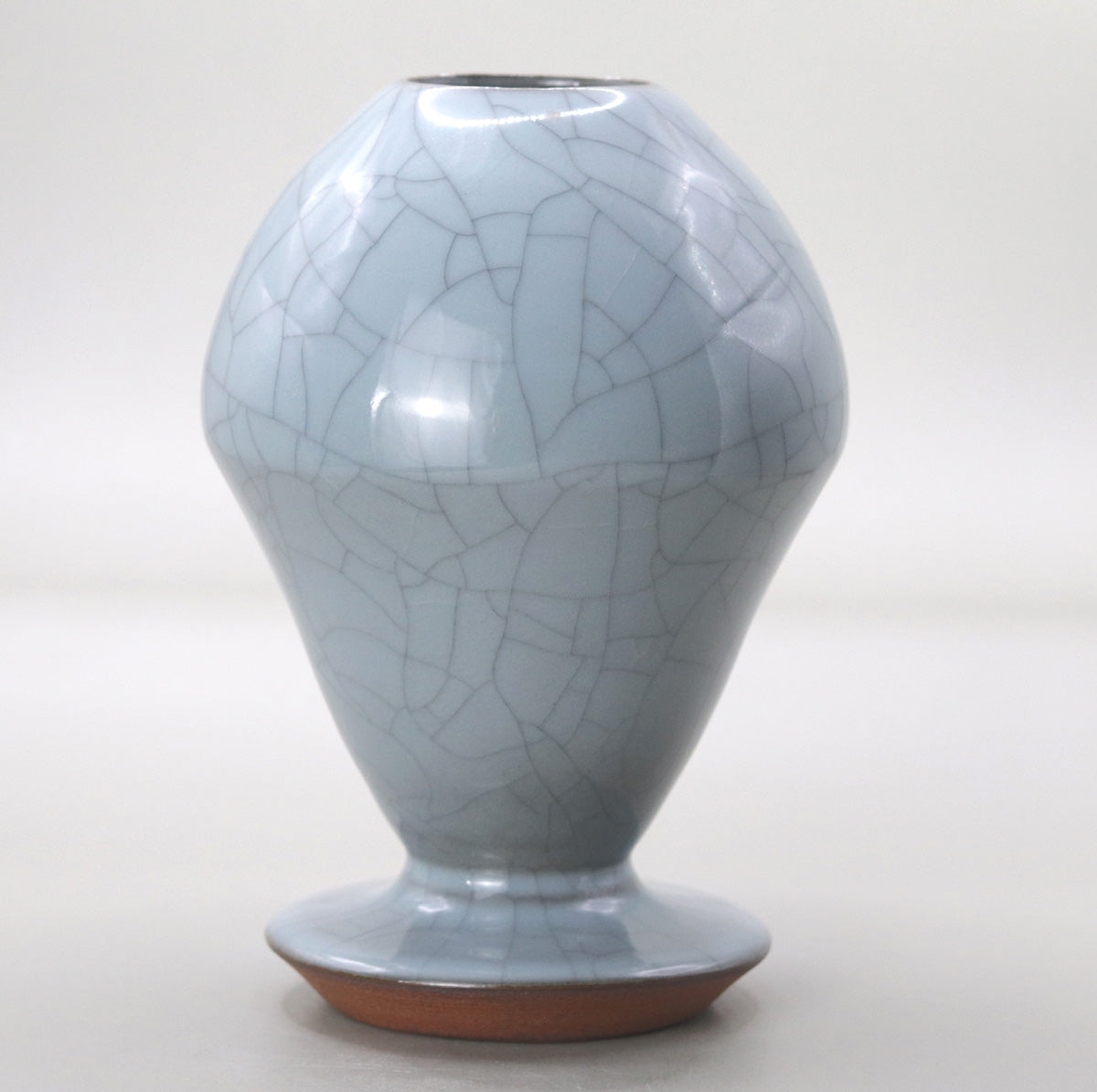
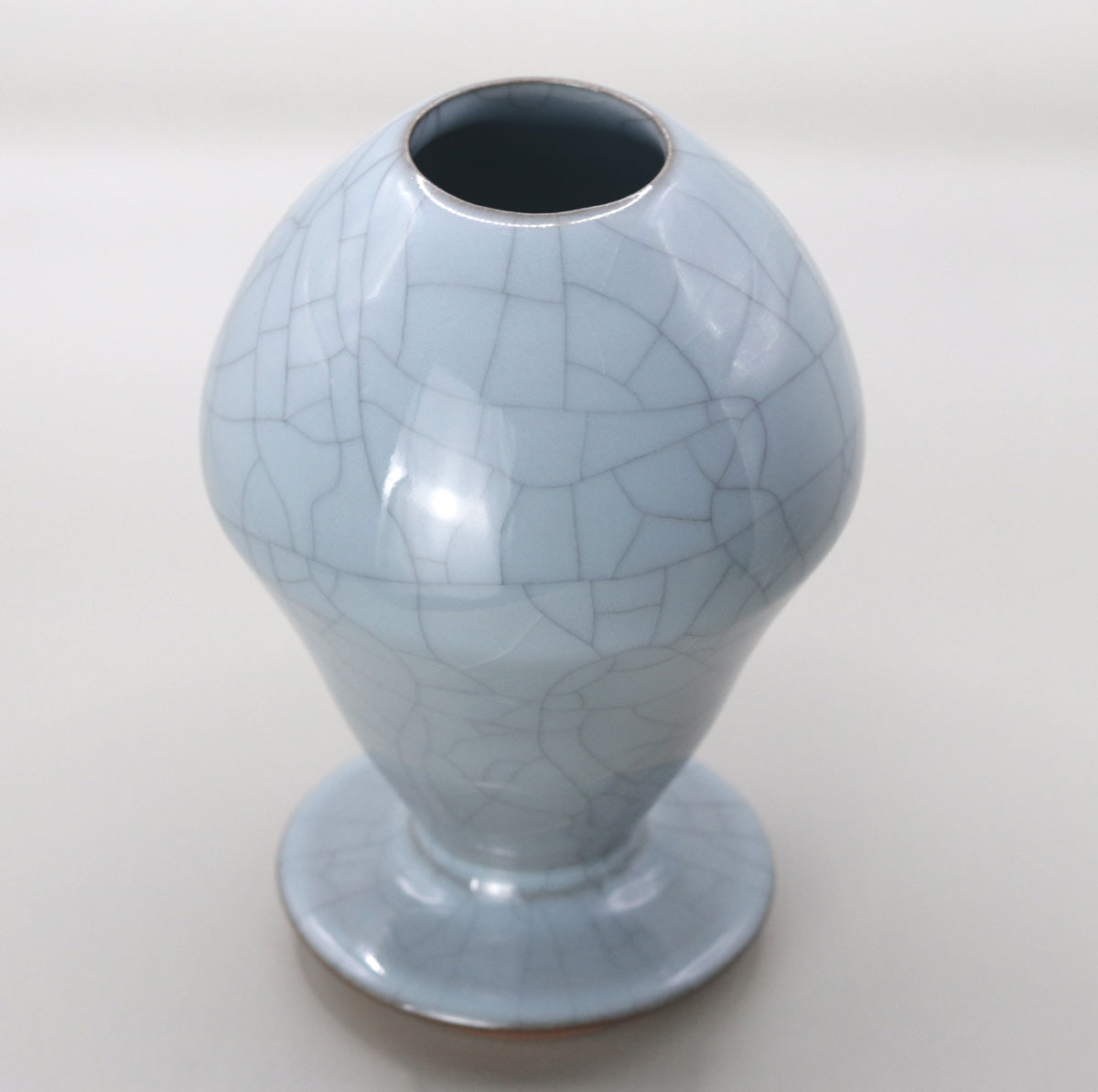
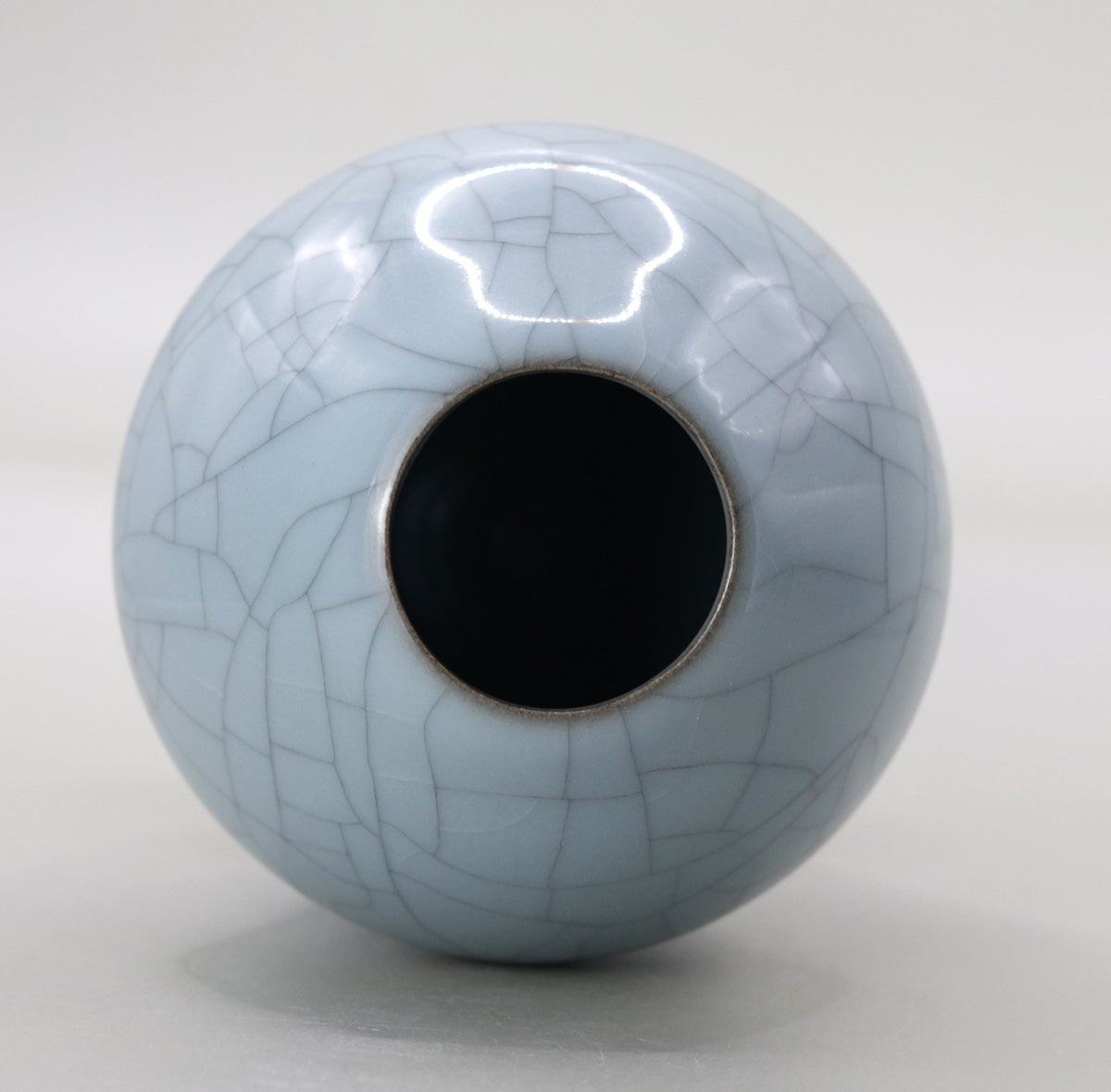
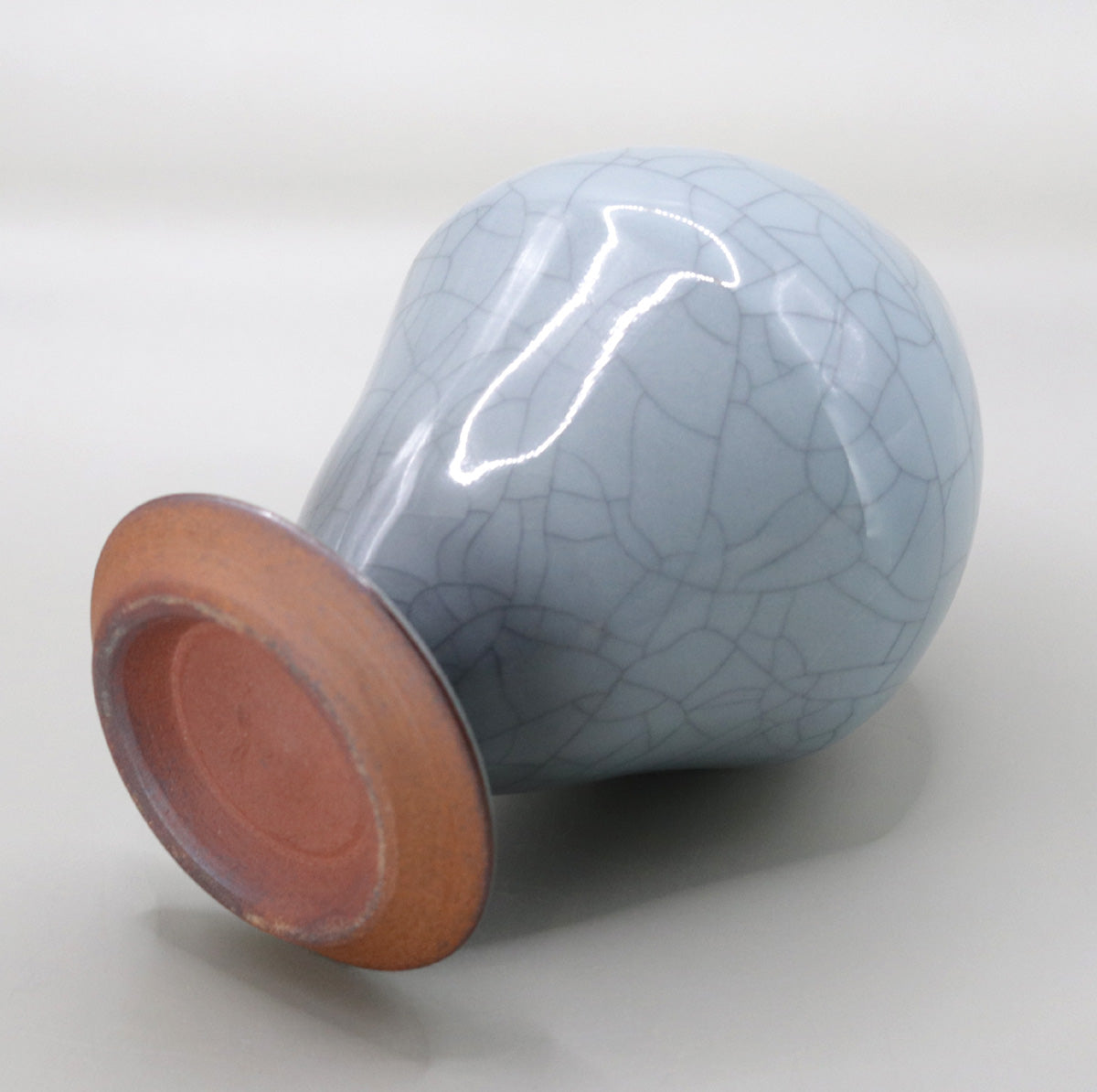
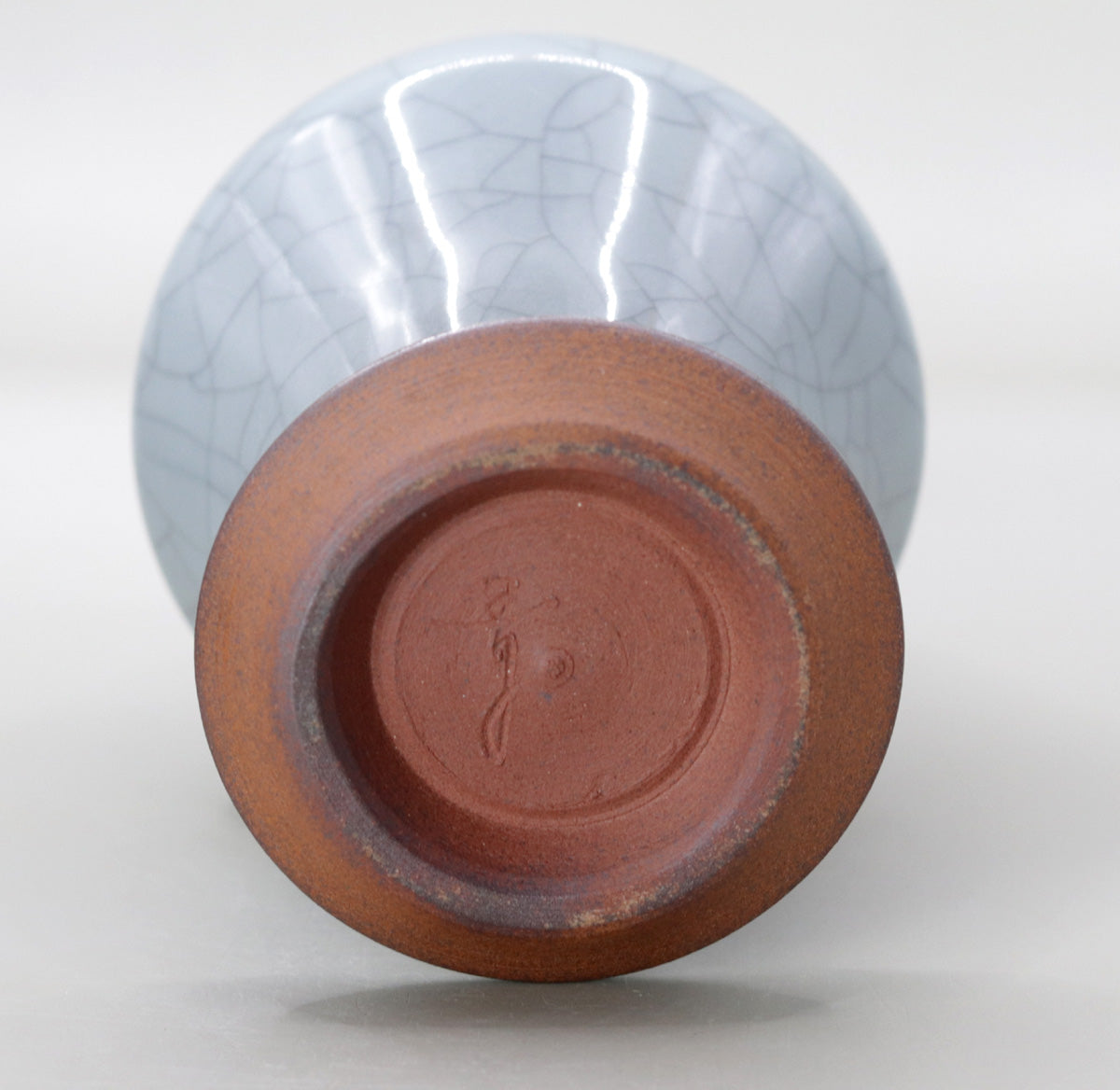
Multi-Column
-
[I will send it to you quickly and carefully]
We carefully package each product in a way that suits it best.
Also, delivery times vary depending on the piece (vessel, etc.).
Items that already come with a box will be shipped within 1-3 days of the order date.
For items that require a box to be made after your order, it will take approximately 30 days for production to be completed and then shipped.
In either case, once we have confirmed your order, we will contact you by email to inform you of the delivery date.
-
[Requests when purchasing pottery]
Even products that look the same may differ slightly in color, shape, size, etc.
The way the glaze is used, the power of the kiln, the firing method, the season, and the humidity also affect the appearance of the pottery.
Please understand the individuality of each piece of pottery and enjoy the unique warmth of handmade.

